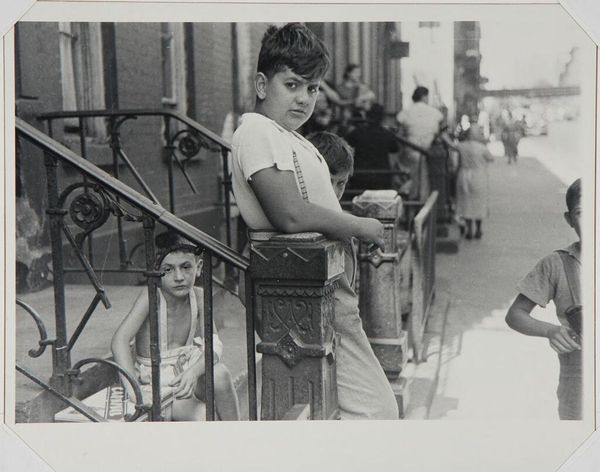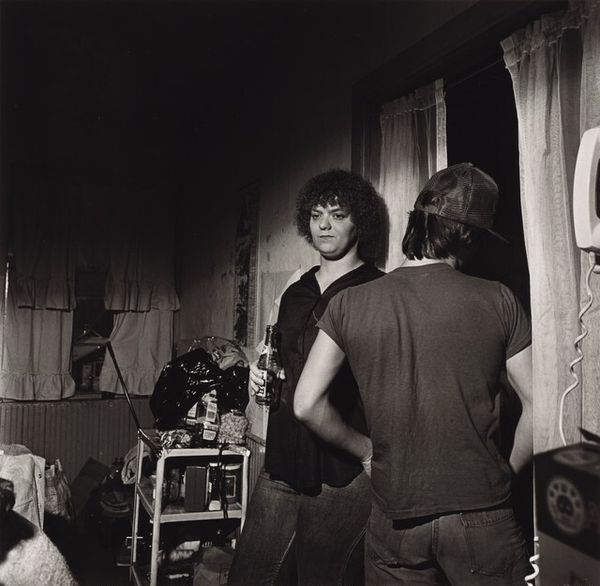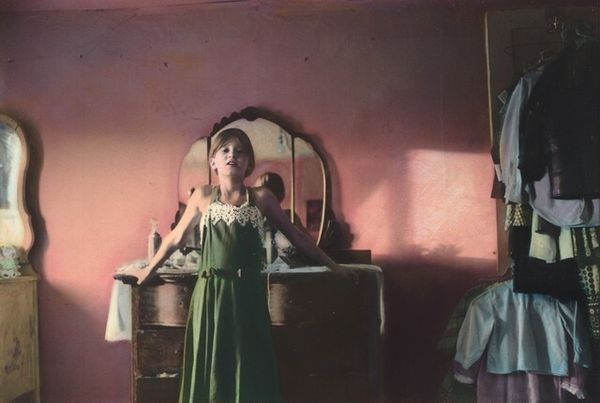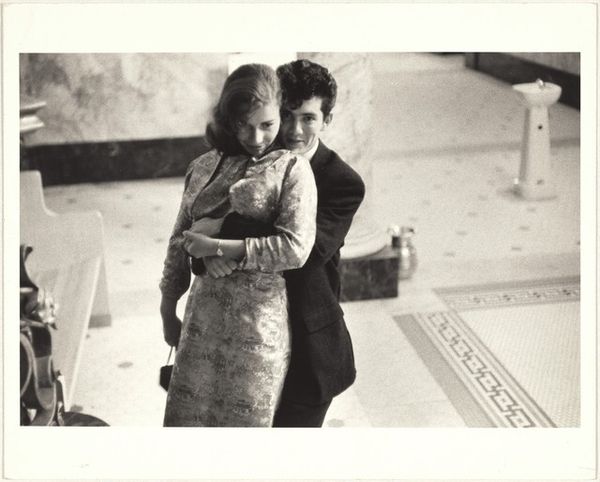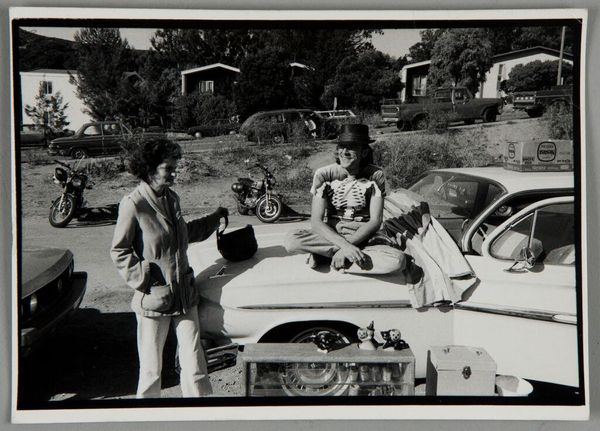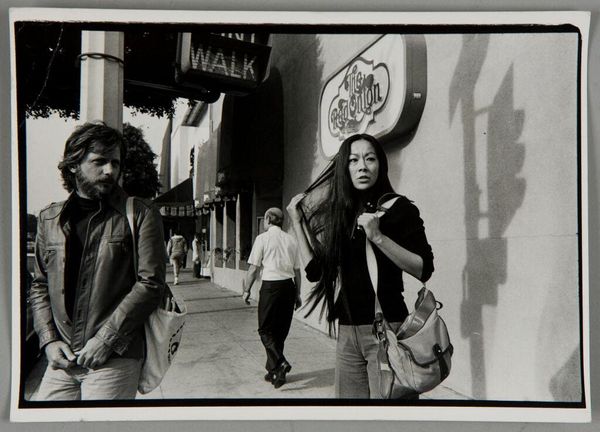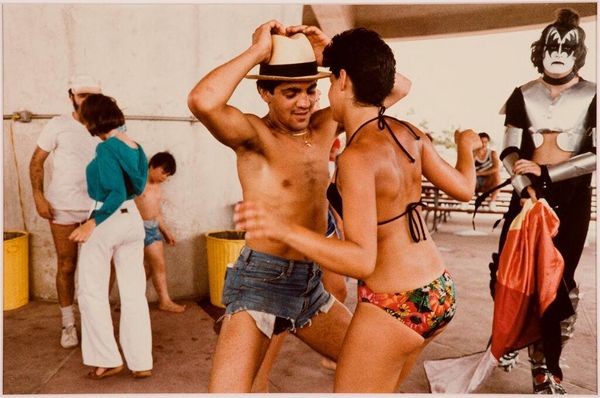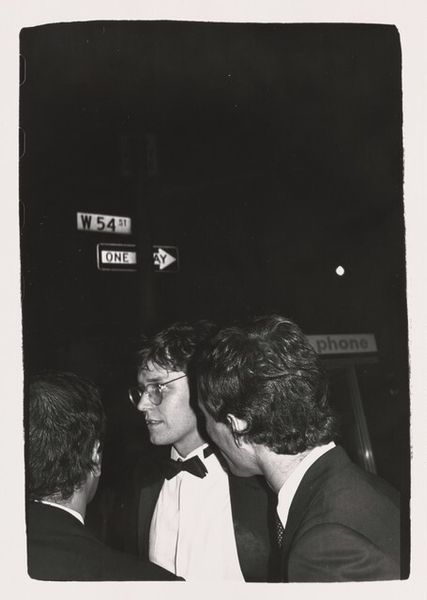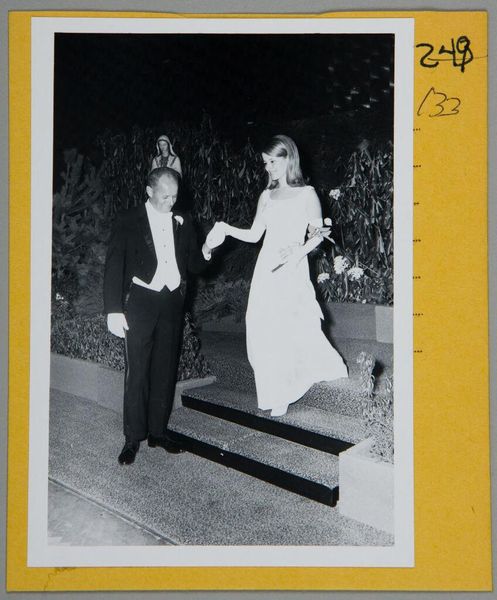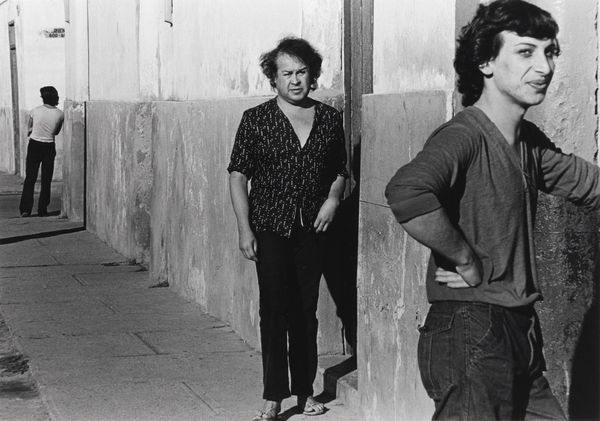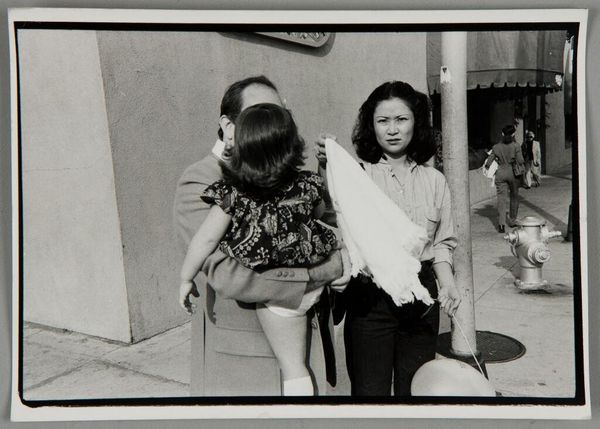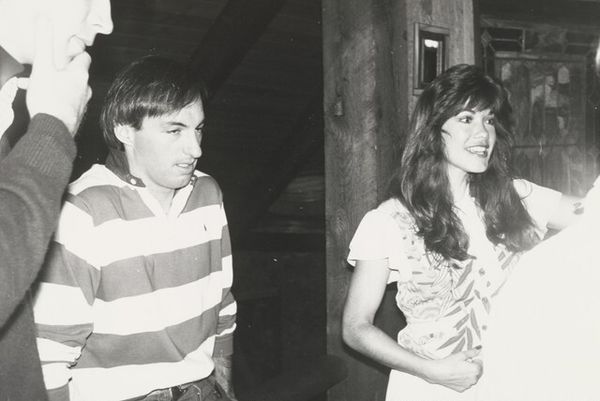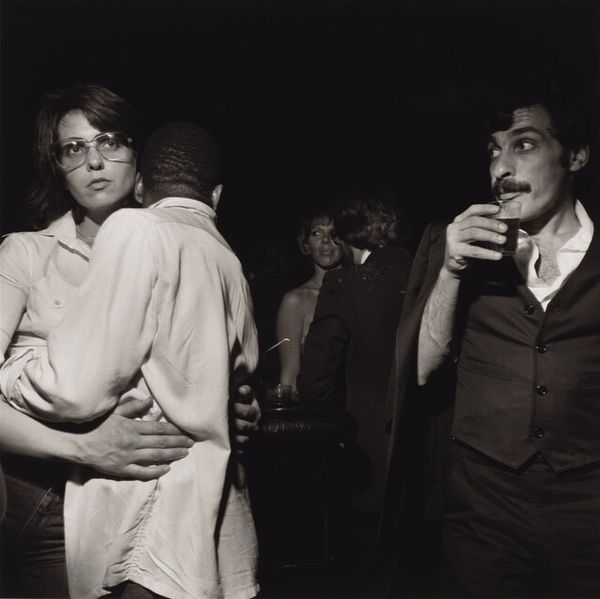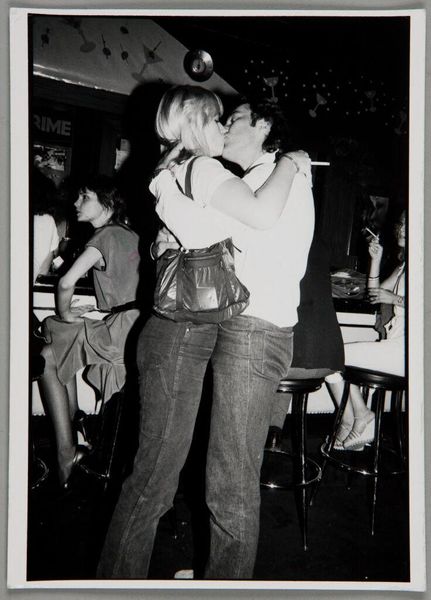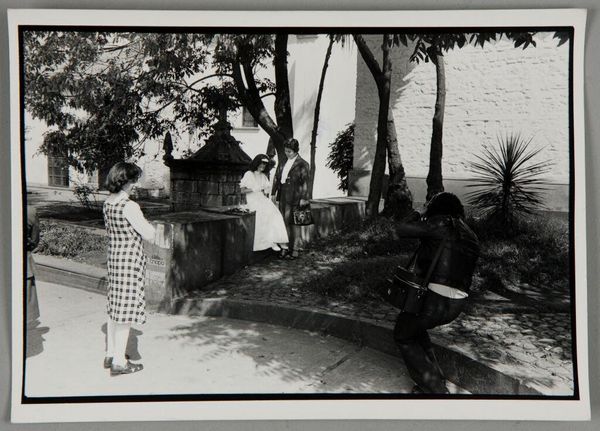
Dimensions: image: 40 × 48.5 cm (15 3/4 × 19 1/8 in.) sheet: 40.64 × 50.8 cm (16 × 20 in.)
Copyright: National Gallery of Art: CC0 1.0
Curator: Leo Rubinfien's "Sorrento, Italy" from 1981 presents a fascinating glimpse into everyday life. What strikes you immediately about this C-print? Editor: The textures grab me. That peeling paint on the building, the crisp white lace hanging overhead, the way the light bounces off the car… it all screams materiality. I’m immediately drawn to the evidence of lived lives etched into the surfaces. Curator: Absolutely. There's a real tension here between the ephemeral, perhaps captured in the fashions of the time, and the more enduring qualities suggested by the architecture. Consider how the photographer frames these two figures—the architecture serving almost as a stage, echoing a sense of classical portraiture but set against a more gritty realism. Editor: I'm curious about the production. This isn't a posed studio shot; it feels almost accidental. You see the dust, the slightly off-kilter composition. How do you think the materials available at the time and the printing process contributed to the overall feel of the image? Curator: It’s key. The warmth and slight grain of the C-print definitely amplifies the nostalgic feeling. But for me, what’s most compelling is the subtle interplay of symbols. That window above them, slightly obscured, feels like a reference to classical notions of perspective, knowledge and destiny - yet clouded and out of reach. Editor: But even "accidental" moments are structured by socioeconomic conditions, by who has access to the equipment and who is deemed worthy of representation. This picture uses readily-available resources that signal class and history through simple things: the cut of clothes, the style of car, even the textile of a curtain. Curator: Very true. It raises questions about the role of photography itself—both its power to document reality and its potential to construct narratives around identity, culture, and even aspiration. What remains with you most strongly as you turn away from the image? Editor: I'm left pondering the role of these materials – the film, the chemicals, even the clothes that clothe the subjects – in shaping the narrative of everyday life and access to memory. Curator: For me, it is about the visual weight the image carries across generations. The universal feeling of being young, unsure, yet full of a world of possibility, resonating long after the physical print fades.
Comments
No comments
Be the first to comment and join the conversation on the ultimate creative platform.
